If your goal is to create a pollinator and bee haven in your yard, here is a list of flowers that attract bees to your yard! I’ve included both California native and non-native flowering plants that bees prefer to visit.
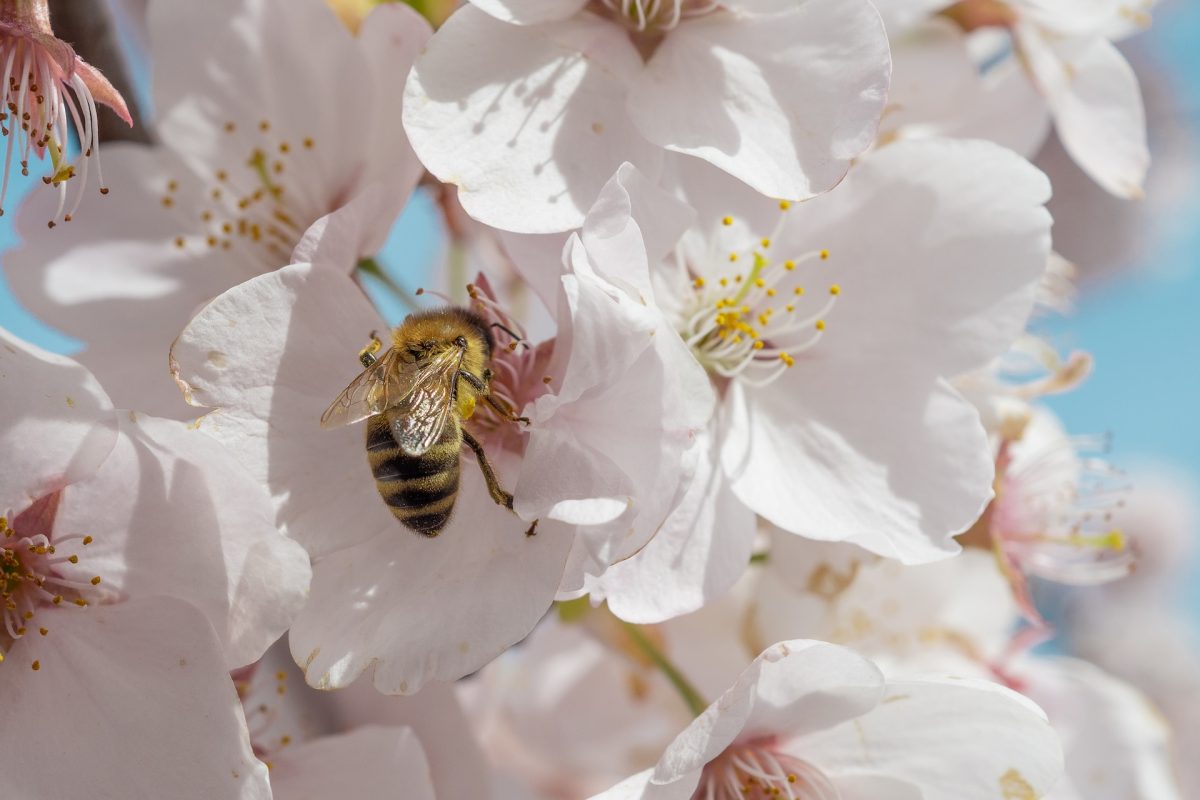
There are many factors to consider when deciding which plants to incorporate into your garden or yard. As you decide the overall color palette and which plants will grow well in your climate, it’s wise to consider which plants will be your pollinator magnets! Including bee-friendly plants is essential to maintaining healthy green spaces, especially if you are starting a vegetable garden. Bees are crucial to any thriving natural landscape, as they pollinate everything from fruit trees to ornamental trees and plants. By planting bee and pollinator-friendly plants, you’re not only benefiting your own yard, but you’re also contributing to the health of the whole planet!
When planning a garden or landscaping project, it’s always a good idea to stick to mostly native plants and flowers. A variety of native plants will provide yearlong interest and ensure native bees have a constant source of food. While planting fruit trees, such as cherry and plum, is a great way to keep bees around, we will be focusing solely on flowering plants in this post.
Here are some of the best flowers and plants to attract bees!
Table of Contents
Which Types of Flowers Do Bees Prefer?
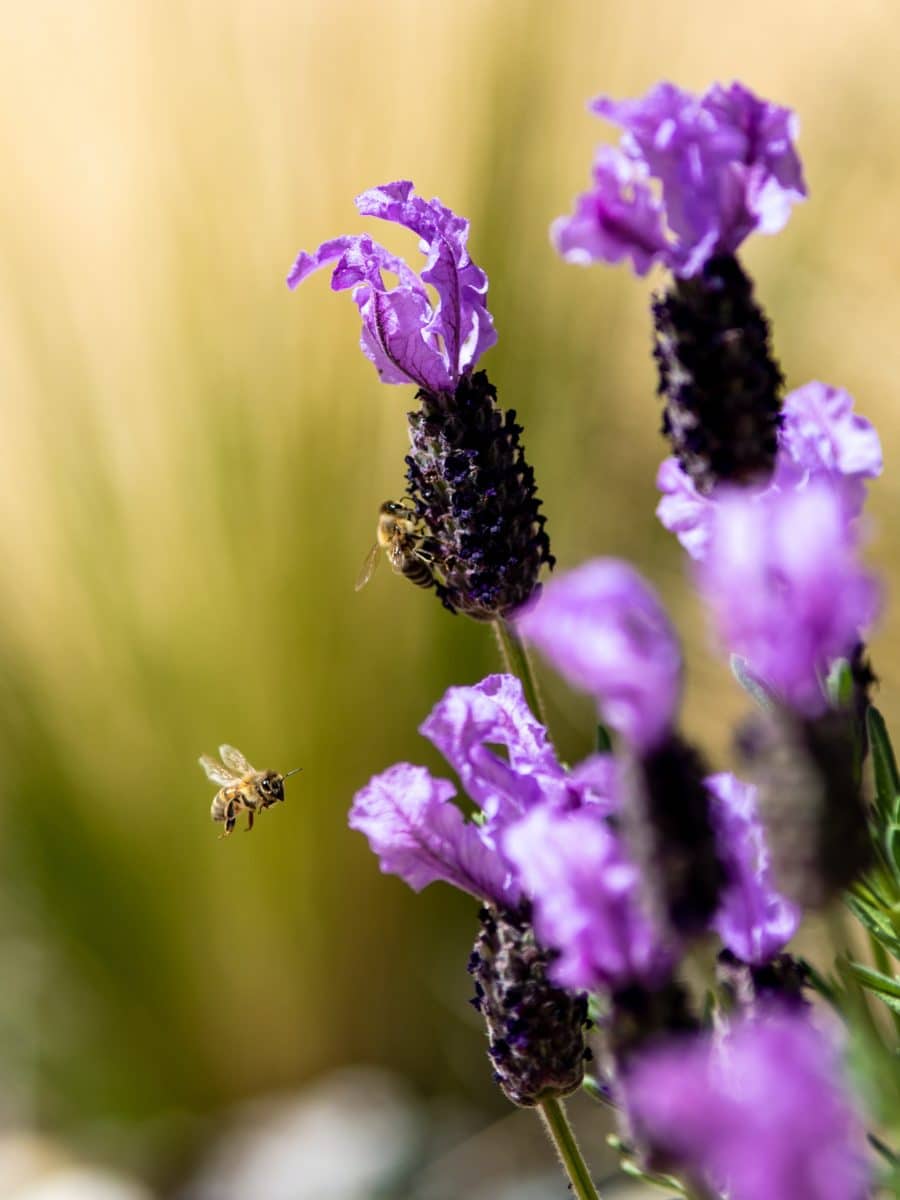
A few factors determine which flowers these fuzzy flying insects frequent the most and which ones they choose to pass up. Some bees with short tongues will avoid flowers with tubular-shaped flowers like honeysuckle and penstemon because their nectar stores are too difficult to reach. Bees with long tongues, or bees like the Valley carpenter bee that pierces the base of flowers to steal nectar, are not deterred by these types of flowers. Other bees, like carpenter bees and bumblebees, are drawn to flowers with large pedals to land on.
Flower color is also important. Bees are most attracted to purple, yellow, blue, and white flowers. They can’t see the color red, so red flowers can blend in with the surrounding foliage (although they can see ultraviolet light on these flowers).
Bees will continuously visit annual flowers that blossom all season long. A few examples of attractive annuals for bees include sunflowers, salvia, verbena, and calendula. Another great option for gardeners is to plant an array of culinary herbs that you can utilize in dishes and that will draw in pollinators to your vegetable garden. Some herbs that attract bees include thyme, borage, lavender, sage, chives, dill, oregano, basil, rosemary, and mint.
For a complete rundown on the characteristics bees typically are attracted to in a flower, visit this guide to plants that don’t attract bees. If bees have become a nuisance in your backyard, this article will explain the simplest and most eco-friendly methods for how to keep bees away.
Native Flowers for Native Bees in California
Most native bees, unlike the imported European honey bee, are solitary dwellers and emerge at different times throughout the year. By choosing a variety of native plants, you are ensuring that different kinds of native bees will visit your yard. An added benefit is that most California native plants require little watering and are generally low maintenance. These native flowering plants are great options for attracting native bees!
California aster / Pacific aster
Symphyotrichum chilense
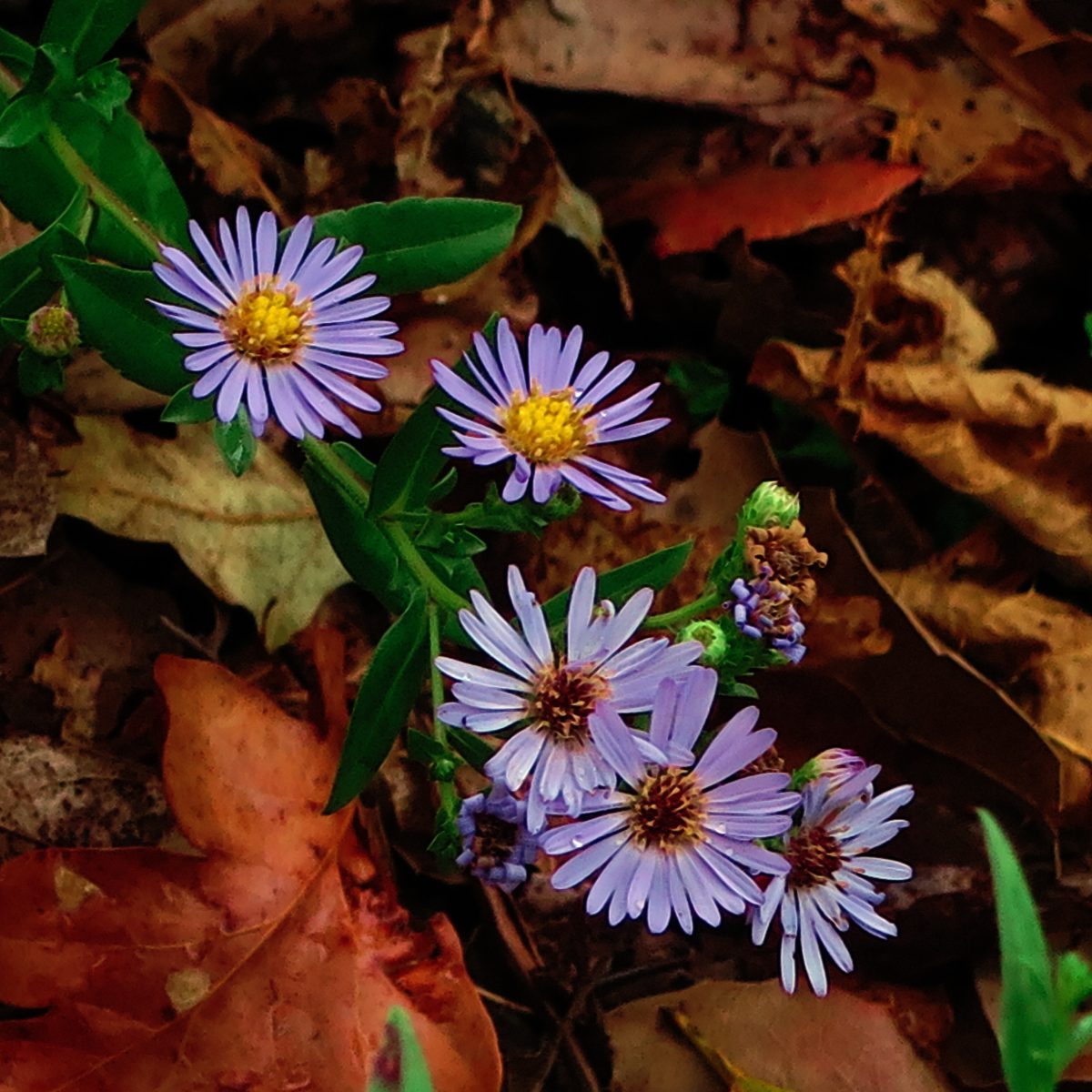
California aster is a perennial herb that produces blue, yellow, and purple flowers. This resilient native plant is very attractive to bees and butterflies. It can grow as a creeping ground cover or as tall as three feet and requires very little water.
California Lilac
Ceanothus
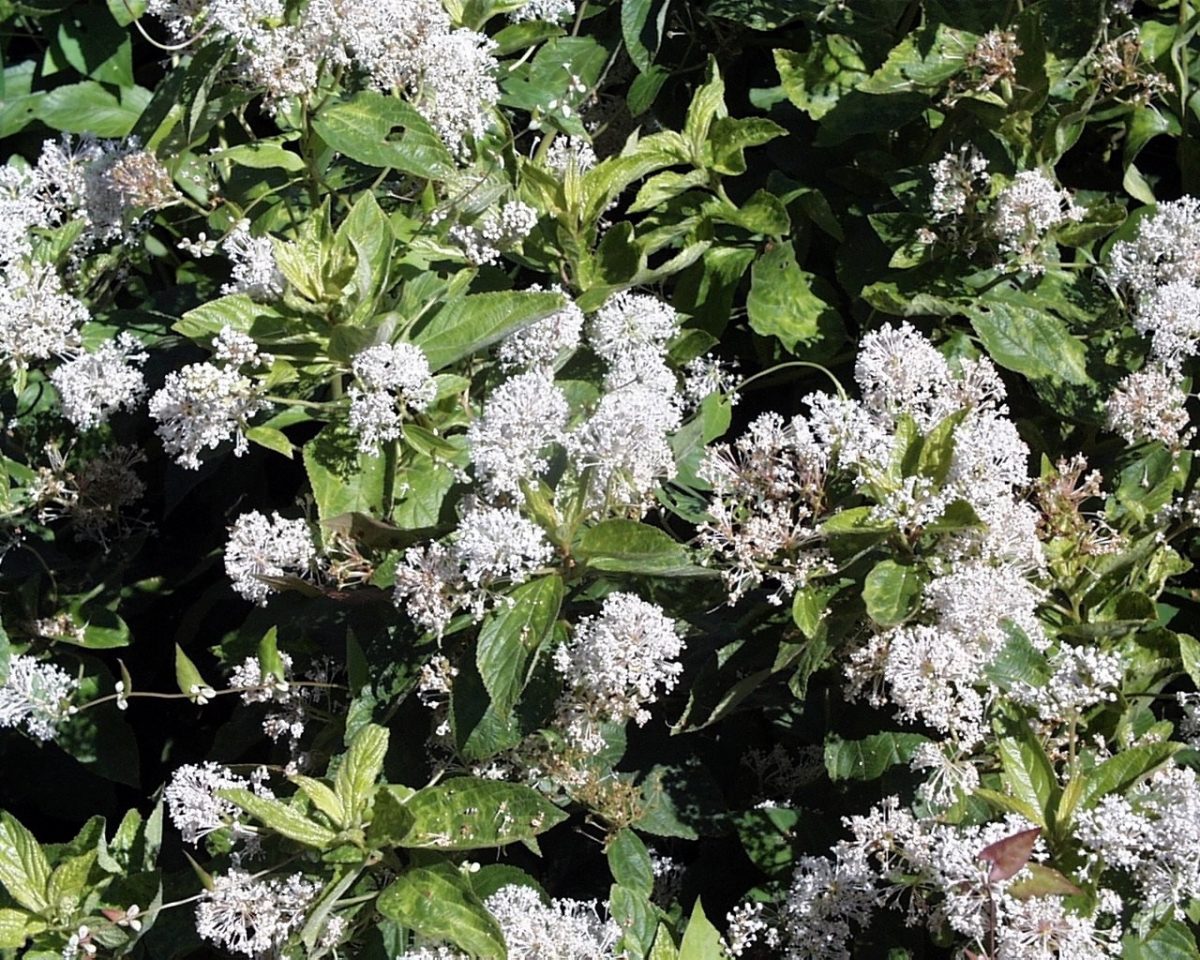
The California lilac produces fragrant white, blue, and lavender flower clusters that provide an abundance of pollen for bees that emerge in early Spring. Not actually a true lilac, this drought-tolerant evergreen plant belongs to the Syringa genus and should be planted in well-drained soil in full sun. Of the 12 species of Ceanothus native to the Pacific Northwest, Ray Hartman’s California lilac with light-blue blossoms is a great choice for native bees. Word of caution: deer love munching on this plant.
Western redbud
Cercis occidentalis
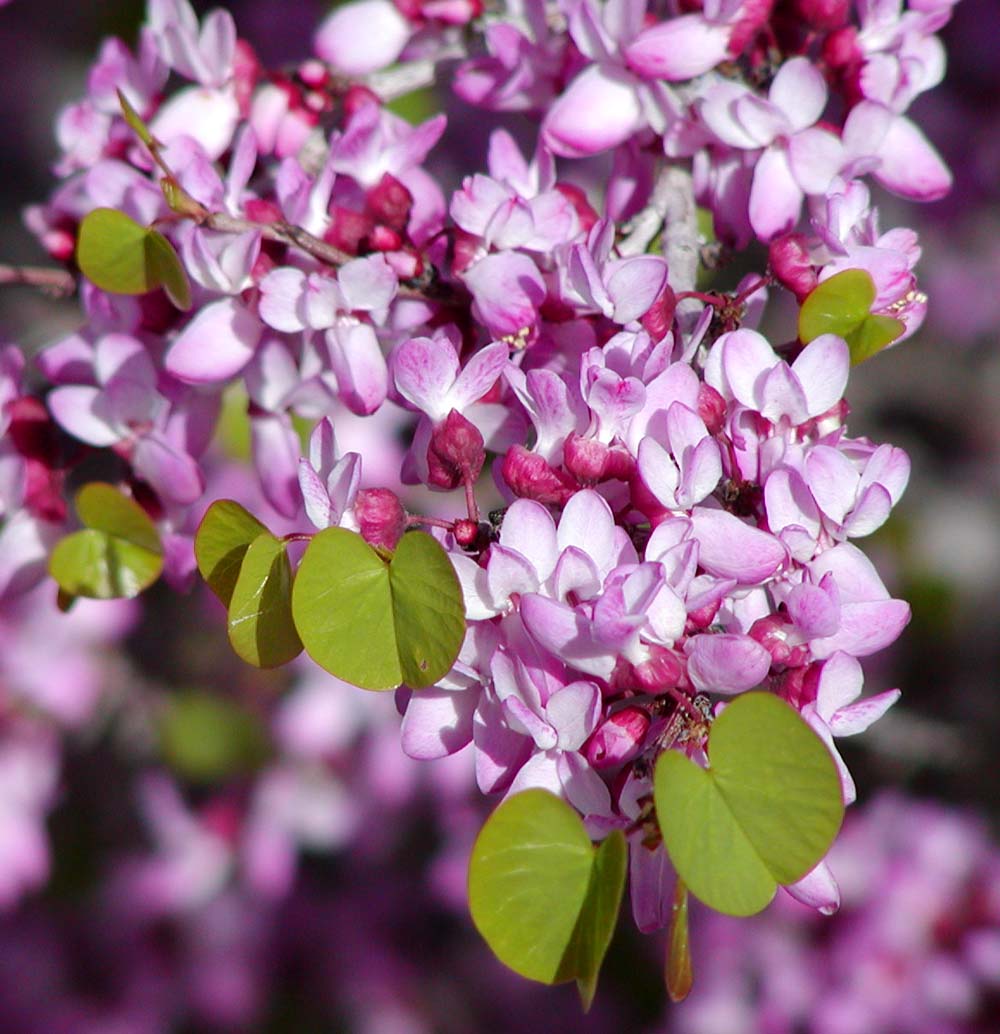
The Western Redbud is a bright and beautiful sight in spring as it blooms with clusters of pink-magenta flowers. The blooms attract a variety of native bees, including leafcutter bees, who gnaw off pieces of leaves to use in their nests. This large shrub is native to the foothills of California and thrives in areas with cooler temperatures in the winter that do not drop below 15 degrees.
California poppy
Eschscholzia californica
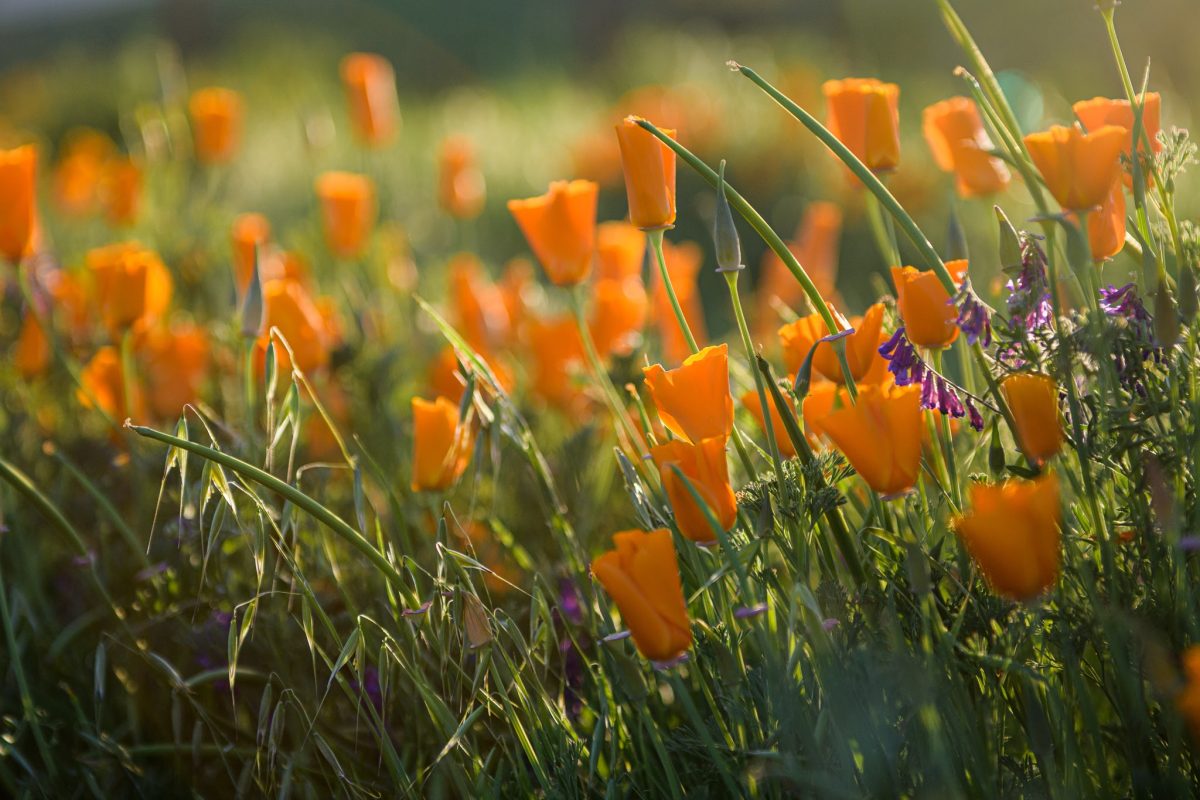
Most California natives know the beauty of our state flower, the California poppy. Native bees love visiting these annuals that act somewhat like perennials by re-seeding or re-sprouting from old roots. You may see bumblebees, honeybees, and sweat bees gathering pollen from the poppies. They are also pollinated by many beetles and draw in butterflies with their nectar stores.
Common Yarrow
Achillea millefolium
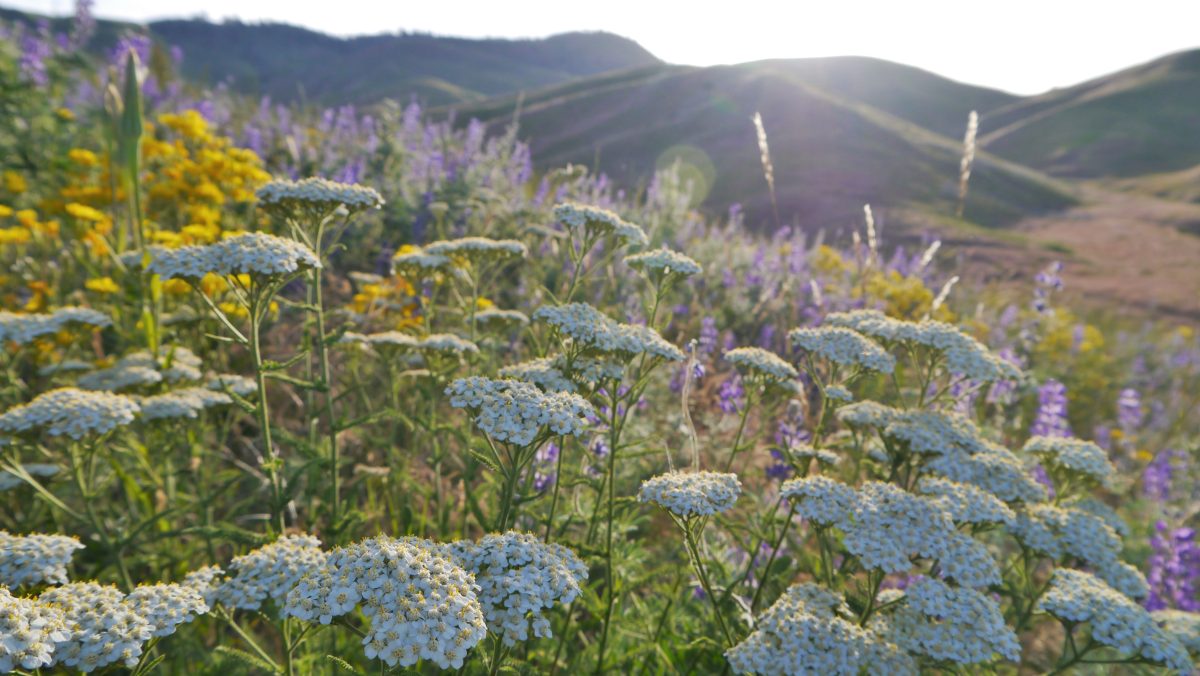
Common yarrow is an aromatic perennial with flat-topped bunches of small white or yellow flowers that are very attractive to bees and butterflies. This plant is fairly widespread in California, and its medicinal properties are well-known to Native Americans. Throughout spring and into early summer, the sun-loving plant spreads quickly in open grasslands and forests, providing pollen and nectar to many native pollinators.
Hummingbird Sage
Salvia spathacea
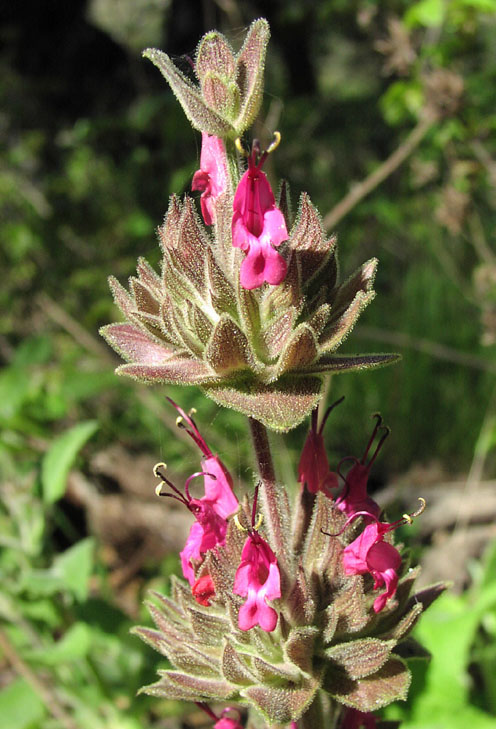
Like most plants native to southern and central California, hummingbird sage is drought tolerant, but it thrives in shaded areas and can do with a little water in summer. As the name suggests, this rose-lilac-colored flower attracts hummingbirds as well as many native bees and butterflies. There are a few attractive cultivars of this fruity-scented plant, including the ‘Powerline Pink’, ‘Sunrise’, and ‘Topanga’.
California Goldenrod
Solidago velutina ssp. californica
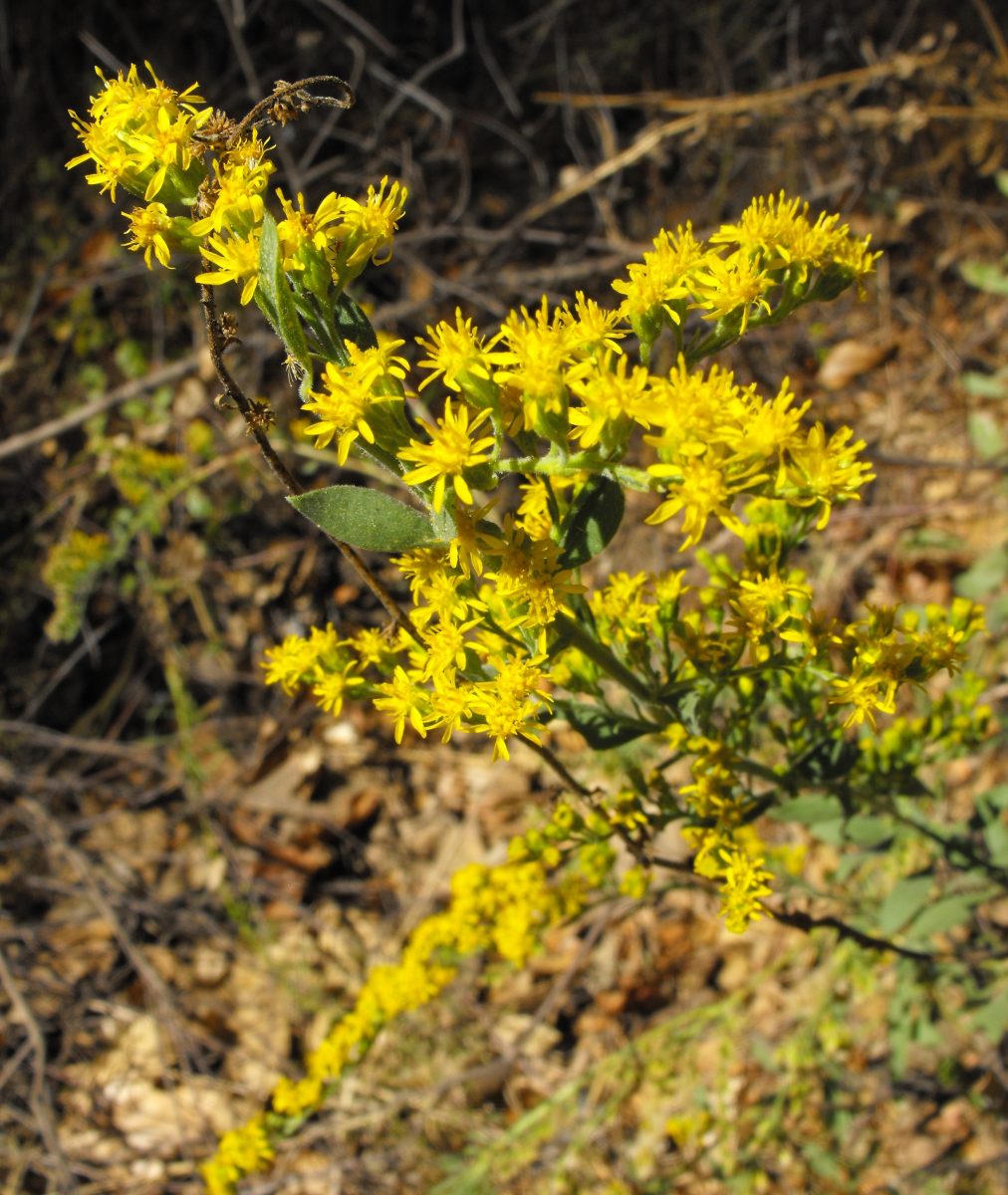
Cascade Creek Goldenrod is a perennial herb that grows throughout many regions of California in a wide variety of habitats. This drought-tolerant plant with spikes of bright-yellow flower clusters attracts many small native bees and butterflies. If you are incorporating this into a native garden, be sure to give it plenty of room to grow.
Lupine
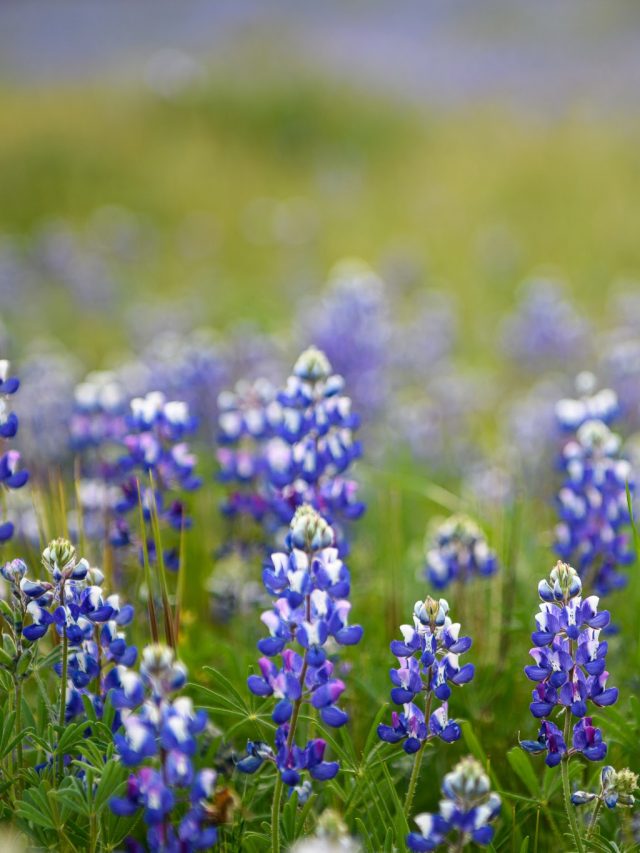
Lupines blanket landscapes throughout California in vibrant blue, purple, white, and yellow flowers. These bright spikes of flowers draw in a variety of native pollinators, including bees, butterflies, and even hummingbirds. Some ubiquitous California lupine species are the bush lupine, sky lupine, and meadow lupine. Most of these species thrive in well-draining soil with plenty of water.
Flowering plants that attract bees
Blue Catmint
Nepeta × fassenii
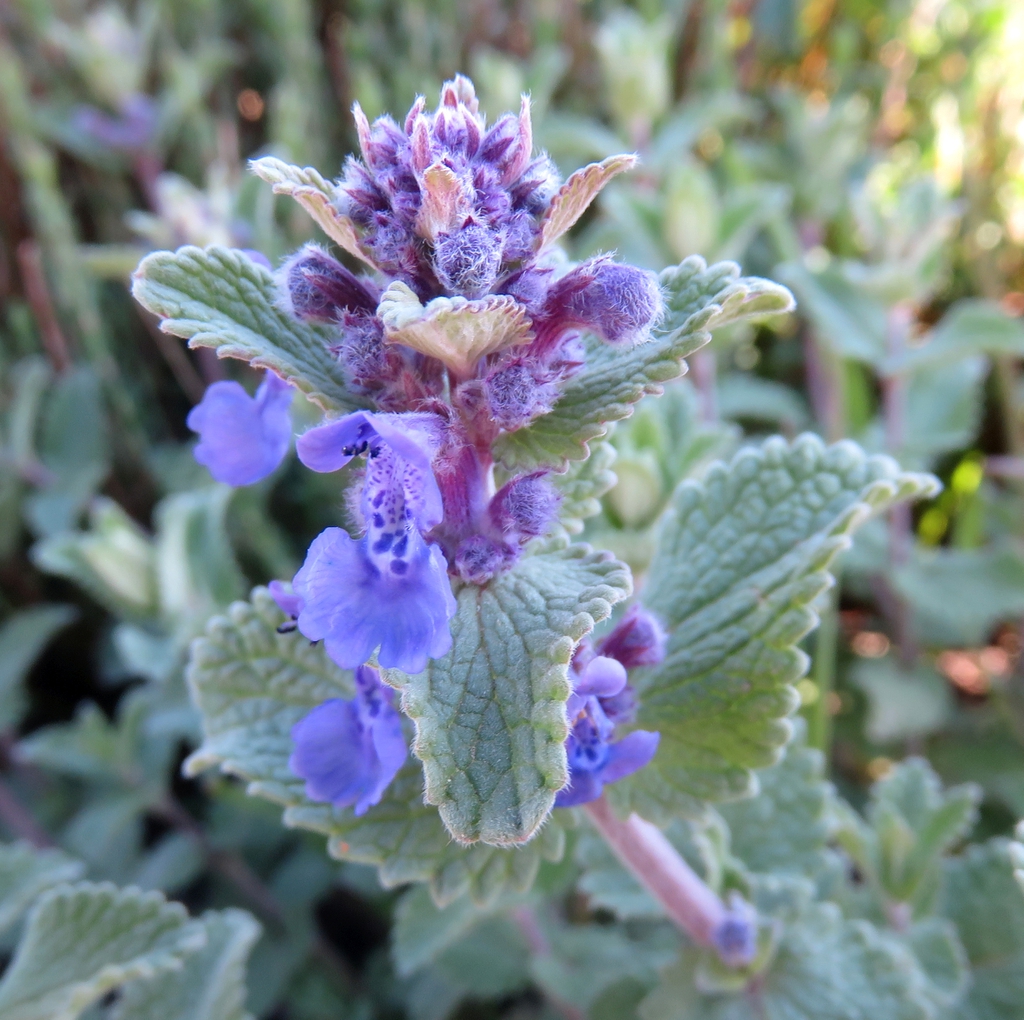
Catmint owes its name to the fact that cats are drawn to its fragrance, even as it repels certain creatures such as aphids and deer. This drought-tolerant perennial is also very popular among a variety of bees for its nectar and pollen stores, including leafcutter bees, digger bees, and blue orchard bees. Catmint produces fragrant, minty leaves and produces spikes of blue purple, and lavender flowers in the spring and summer. This spreading plant makes for a good border in a garden and thrives in well-draining soil in full sun.
Germander Sage
Salvia chamaedryoides
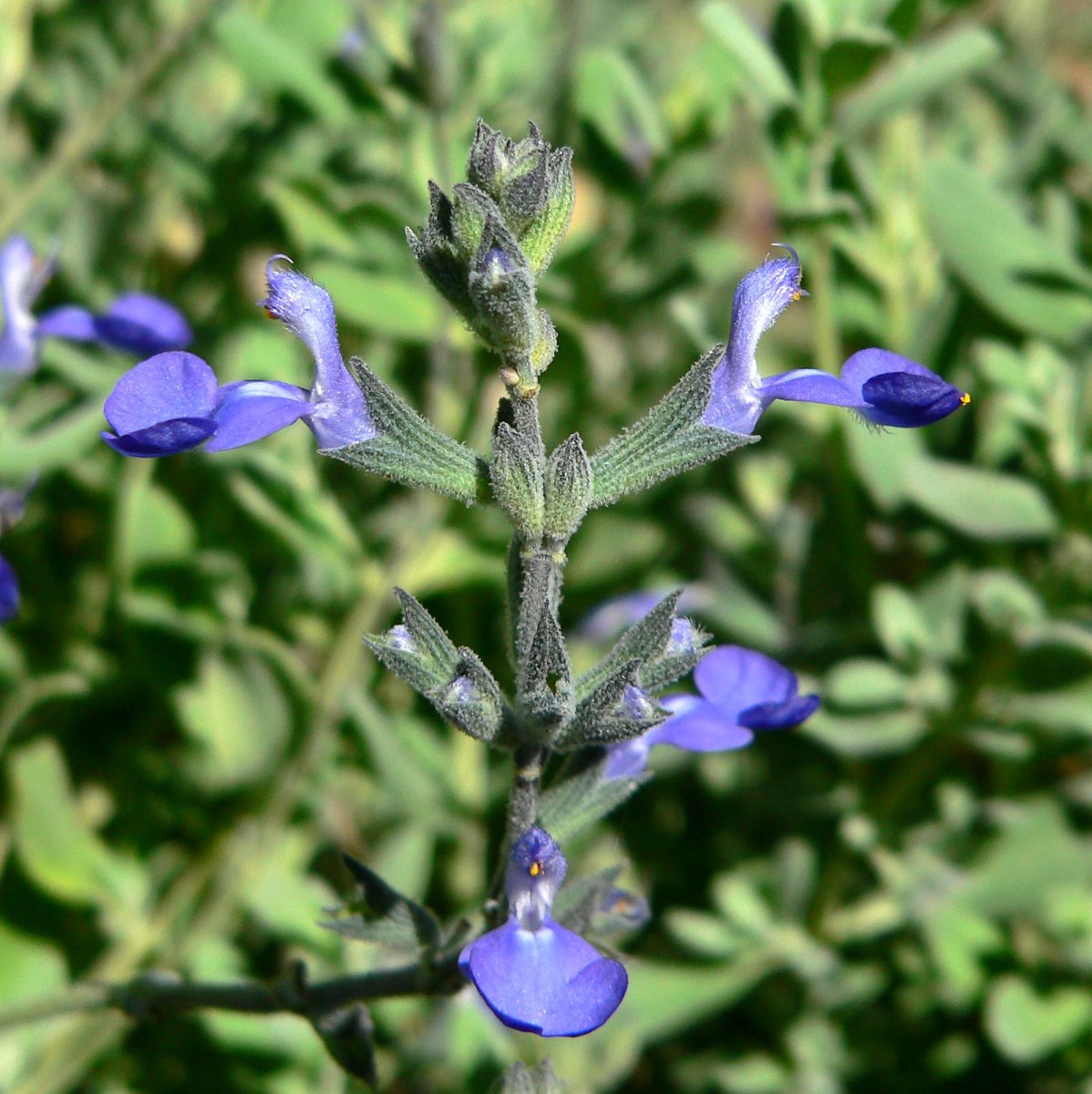
Germander sage blooms in late spring and again in fall with deep sky-blue blossoms that provide a main source of nectar for many different bees. Carder bees will sometimes be territorial around these sage blooms and defend their territory against other bees. If you provide the sage with a little water in summer, the flowers will stay around longer. Deadheading wilted flowers in summer will also help you see more blooms, which in turn will attract more bees, hummingbirds, and butterflies to your yard. Plant this low-growing perennial in full sun and well-draining soil.
Russian Sage
Perovskia atriplicifolia
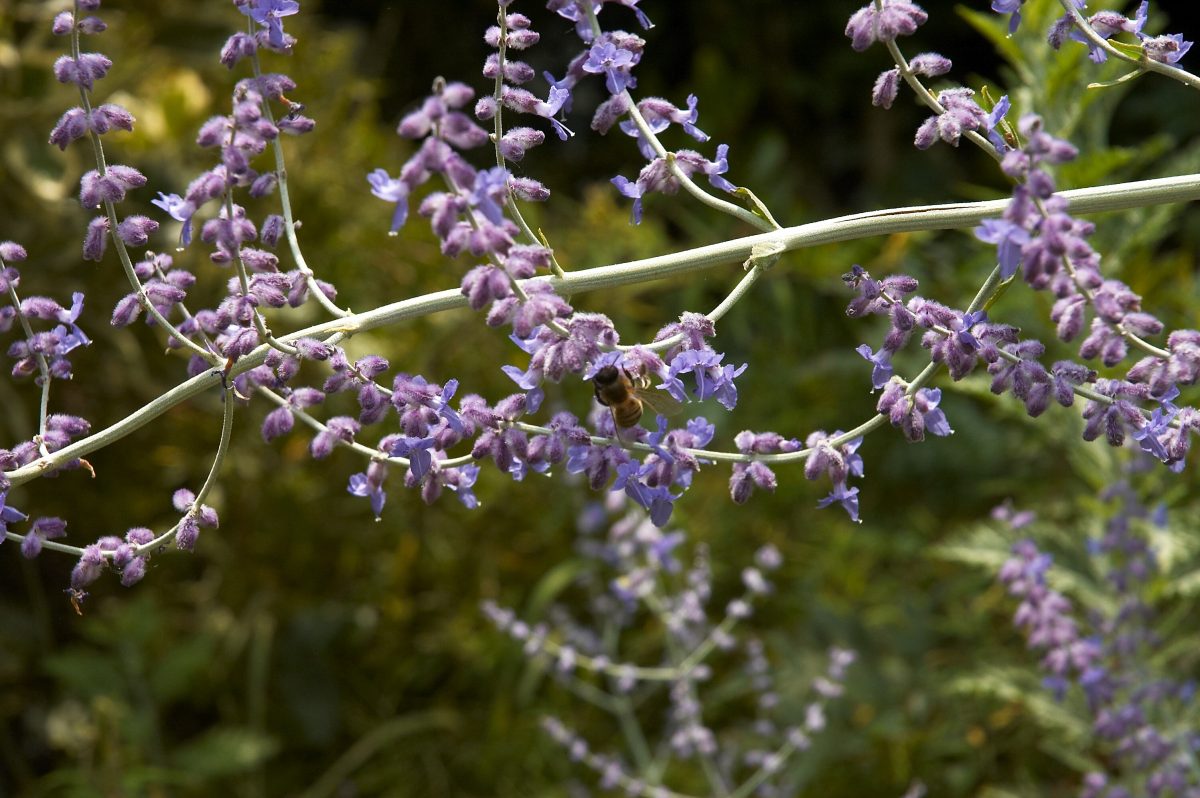
Russian Sage is actually a member of the mint family that somewhat resembles lavender, blooming into a cloud of small blue-purple flowers. From June to October, you will find both native bees and honey bees digging around in these fragrant blooms for pollen and nectar. This hardy heat-loving plant thrives in harsh environments and is resistant to deer and pests.
Bee Balm
Monarda spp.
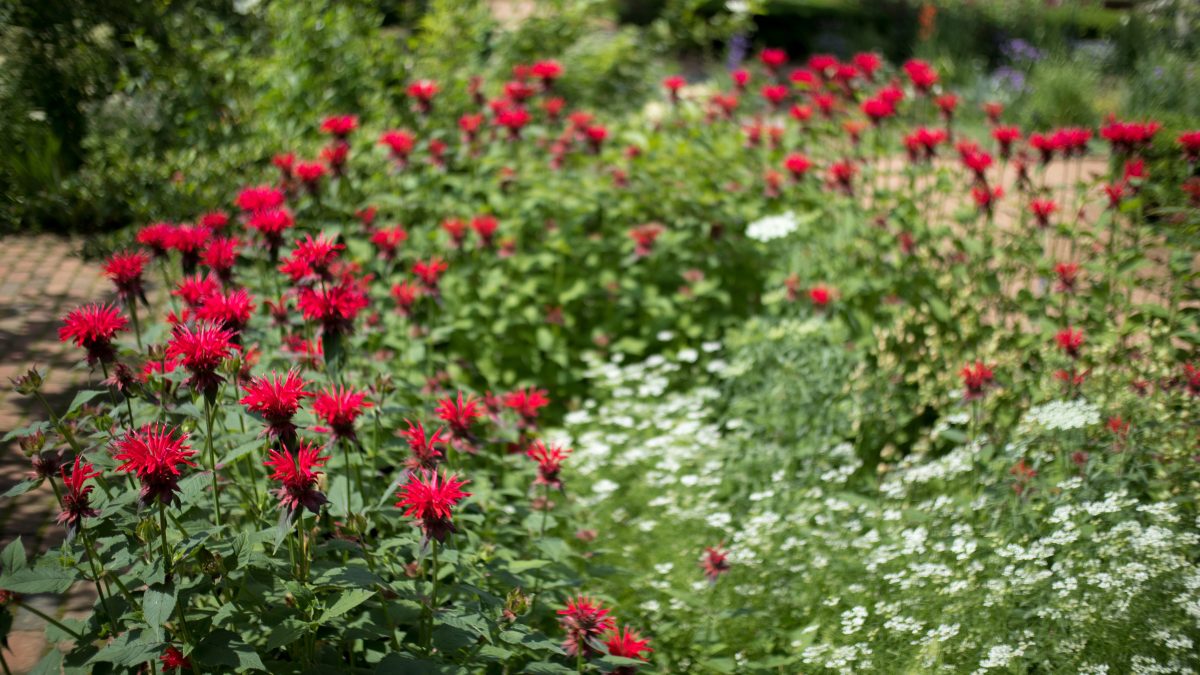
As the name suggests, Bee Balm is popular among bees. You will also see hummingbirds and butterflies utilize their long tongues to reach the nectar at the base of these long tubular flowers. Some bees without long enough tongues, such as bumblebees, will “rob” the flowers’ nectar by piercing a hole from the outside at the base of the flower tube. Also known as Bergamont, these fragrant and showy flowers burst into color in mid to late summer, from white and pink to deep red and purple. Bee balm can become susceptible to powdery mildew, but does well with plenty of room to grow in moist, well-draining soil.
Black-eyed Susan
Rudbeckia
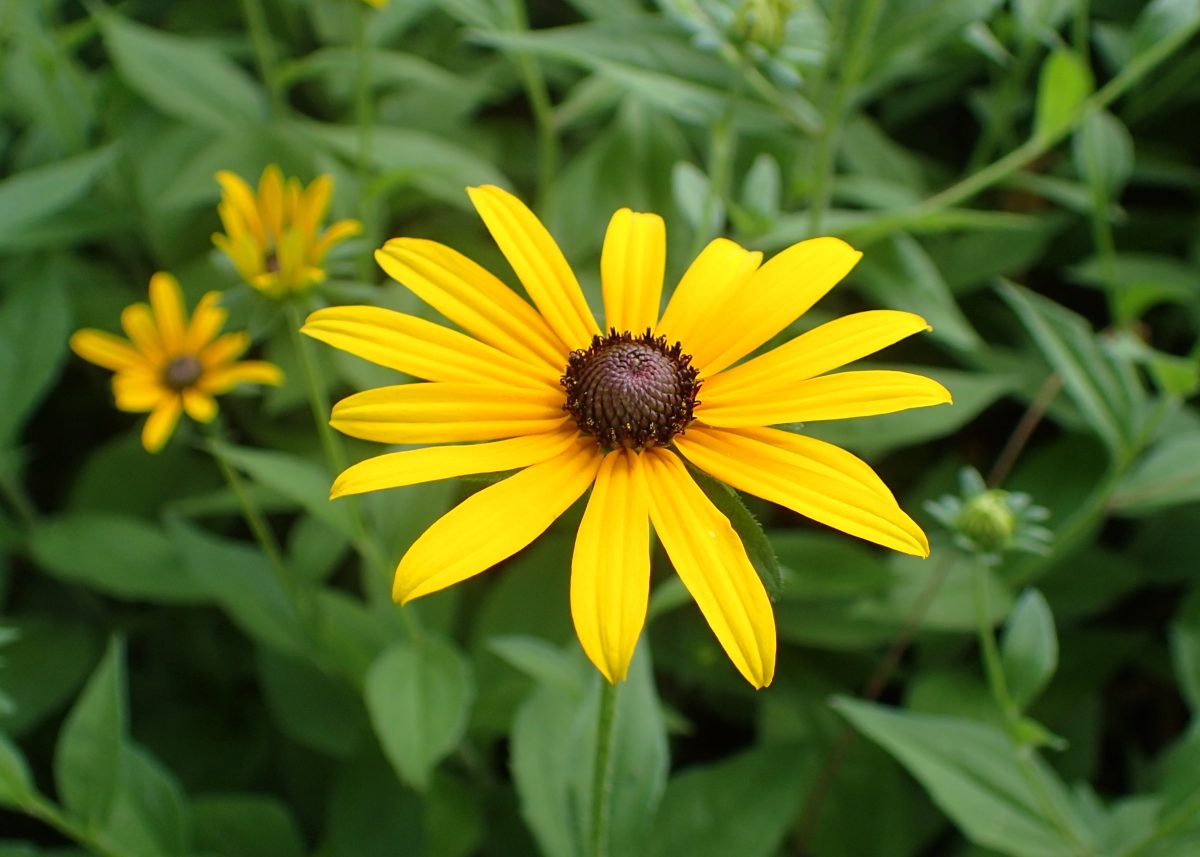
Black-eyed Susans are bright golden-yellow flowers that attract many beneficial pollinators, including bees, with their rich nectar stores. Native to eastern North America, these showy flowers love full sun and can tolerate harsher conditions. There are many varieties and hybrids that bloom in orange, red, and brownish flowers from June to August.
Coneflower
Echinacea
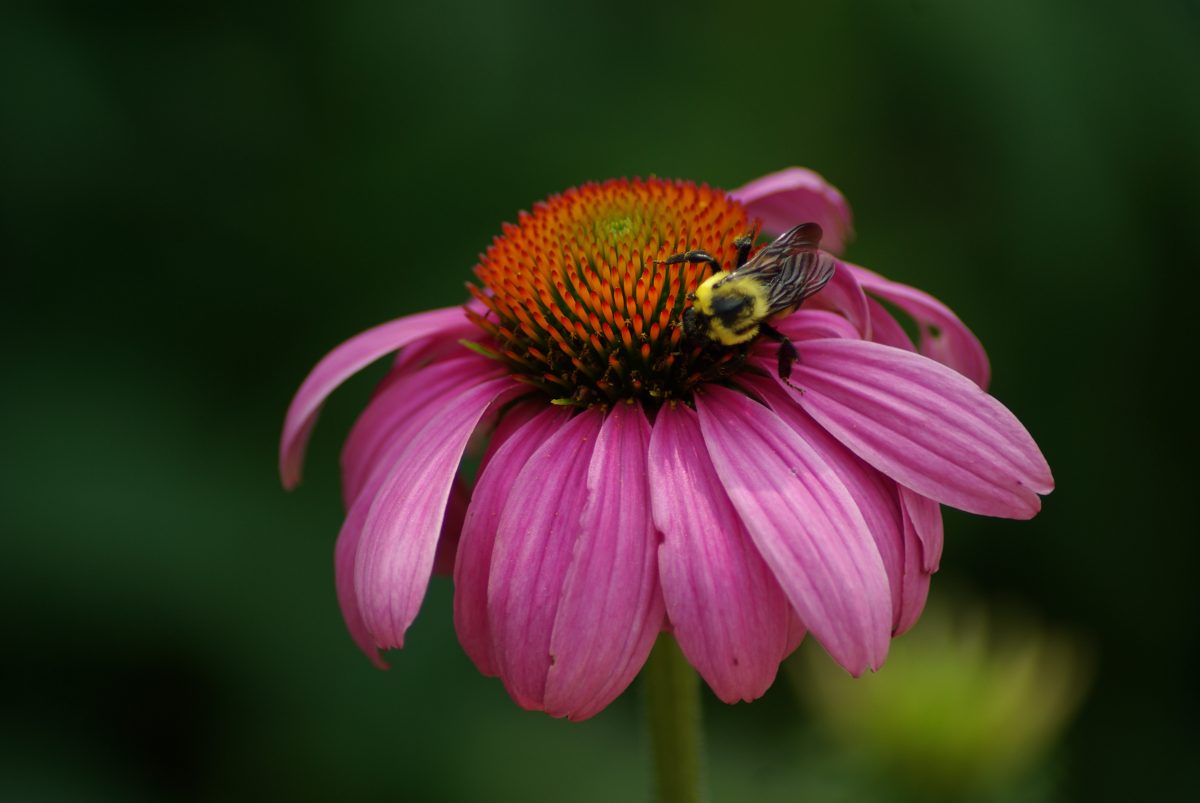
The entire Echinacea genus is commonly known as coneflowers, which are native to the U.S. and come in many different colors. These sunflower-like blooms with a protruding cone at their center attract bees, butterflies, and birds such as goldfinches. When choosing a coneflower for your yard, it’s best to stick with native species, as they usually produce the most nectar. Coneflowers are sun-loving and drought-tolerant, making them fairly hardy plants.
Coreopsis
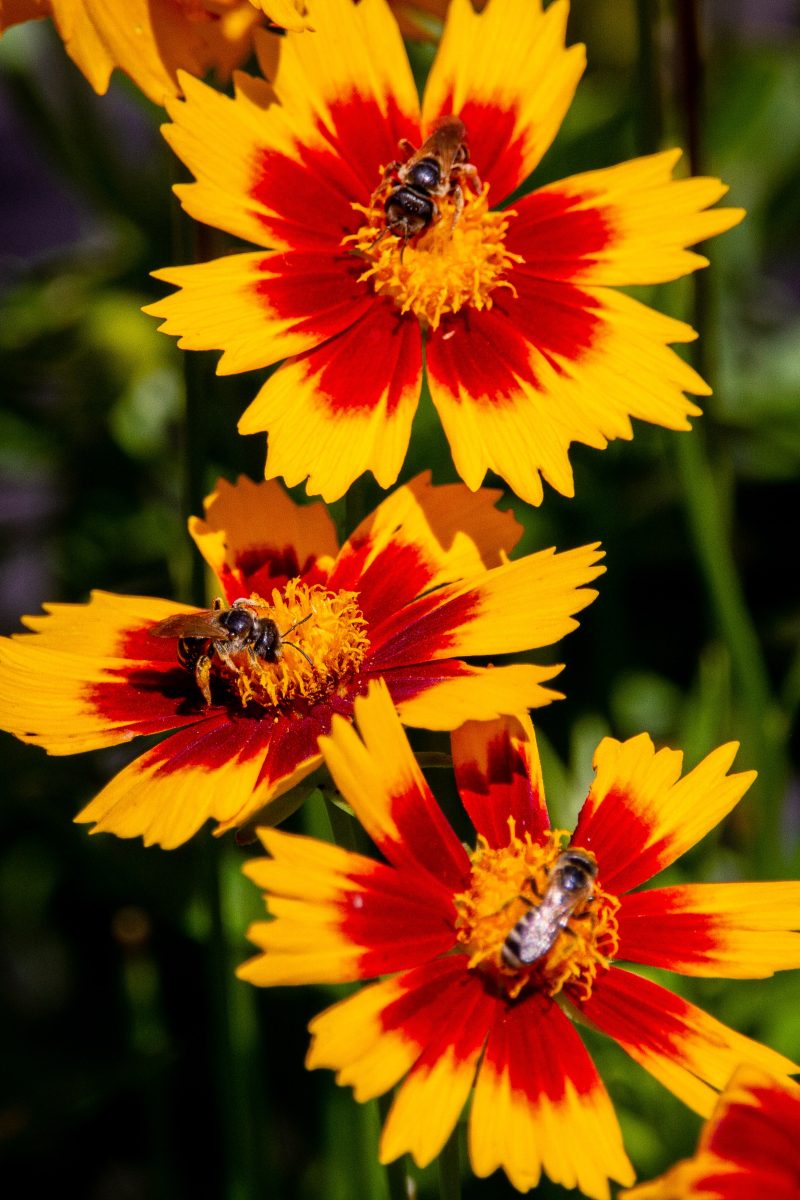
Known for attracting butterflies, the various species of coreopsis plants attract many bees with their rich nectar stores and fragrant blooms. Coreopsis flowers bloom from summer into fall and come in a variety of colors, including white, yellow, orange, and reddish purple. These bright daisylike flowers are very hardy and can tolerate heat, humidity, and drought. Not only will these add a lot of interest to your garden or yard, but they will attract all types of beneficial pollinators. Coreopsis is deer-resistant and can be either annual or perennial depending on the species.
Common Foxglove
Digitalis purpurea
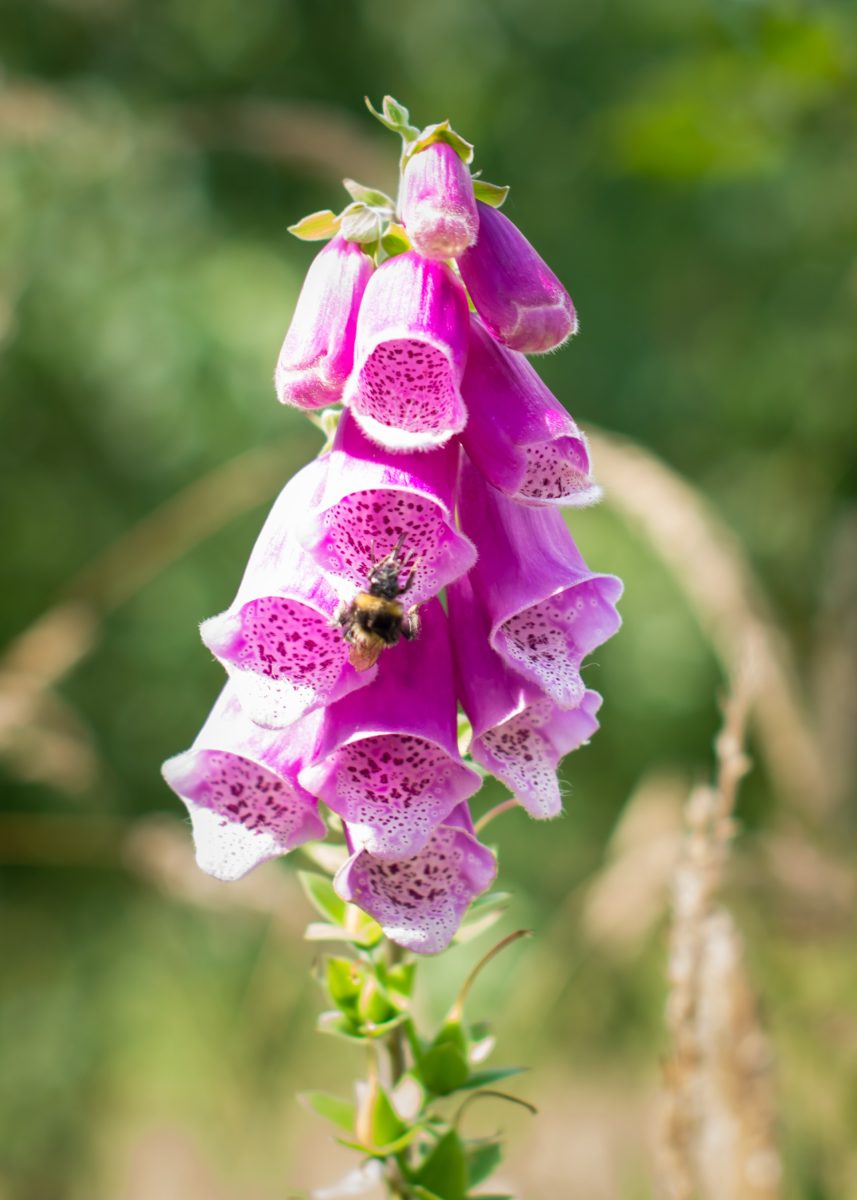
Common Foxglove is a unique-looking flower that produces spires of purple bell-shaped blossoms with dark speckles inside. These flowers are very popular among long-tongued bees, bumblebees, and hummingbirds. Foxglove blooms in early spring and is generally short-lived, but it’s very good at self-seeding. It comes in a few other colors, including white and apricot, and is a great addition to more wild landscapes. Be aware that any part of this plant is poisonous to dogs, cats, and humans if ingested.
Tall Sedum
Sedum spectabile × Sedum telephium
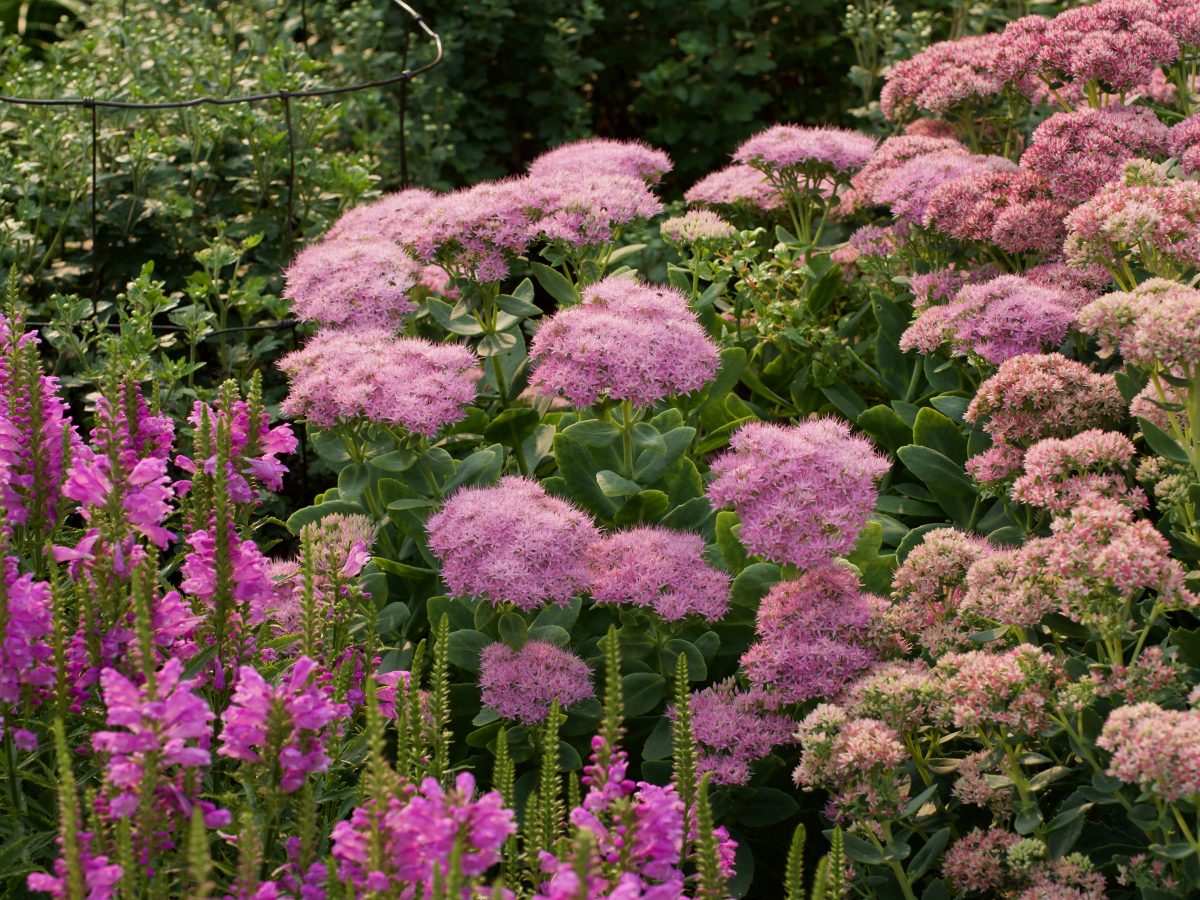
Sedum is a genus of succulent, also known as stonecrop, that is beloved among bees for its rich pollen stores. Other beneficial pollinators such as butterflies and moths also flock to the sedum blooms. There are some sedum species that creep along the ground, but the tall sedum hybrid can grow up to two feet tall and produce dense clouds of tiny blooms. These small flowers transition from pale green in summer to deeper and deeper shades of pink as fall approaches. As a succulent, this plant can tolerate drought conditions when established and is very low-maintenance. Popular sedum cultivars include autumn joy, beach party, and brilliant.
Agastache (Hyssop)
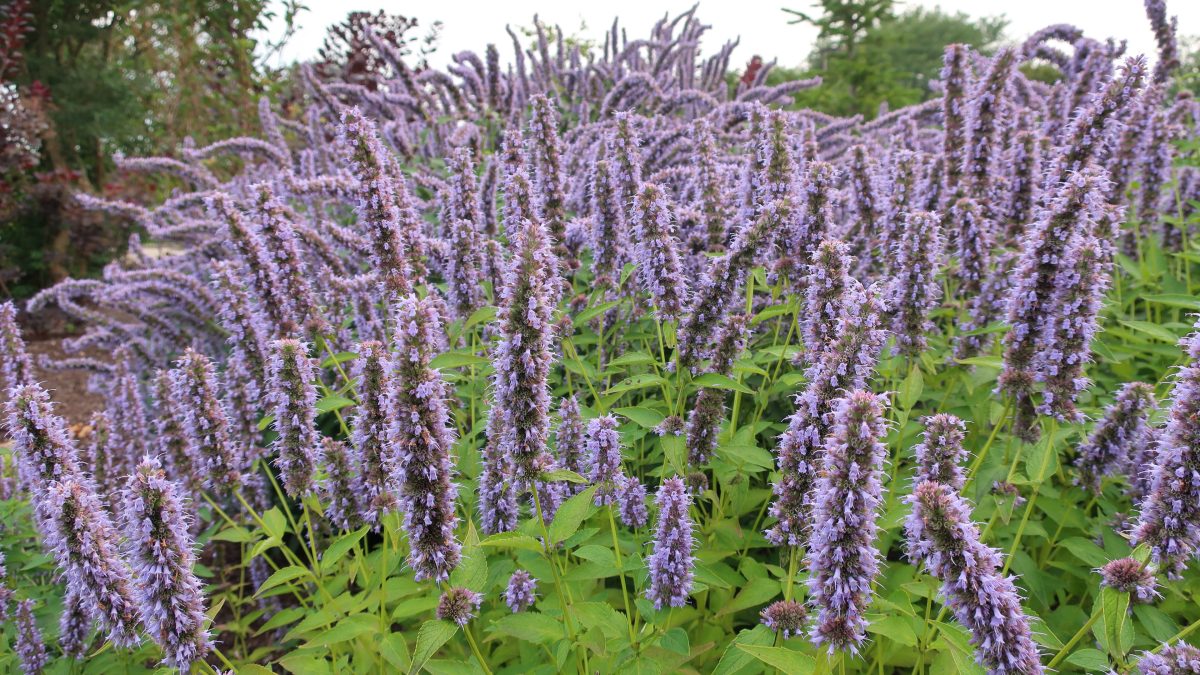
Agastache or hyssop is a perennial that produces tall aromatic spikes of flowers that attract both bees and hummingbirds. Giant hyssop can reach up to 6 feet tall, and most species are drought-tolerant once established. They tend to bloom all throughout summer and there are species that produce pink, rose, blue, white, or orange flowers. Hyssop thrives in well-draining soil and should be planted in full sun to partial shade.
More plants that bees love:
- Blue Bells
- Canadian Thistle
- Thyme
- Borage
- Lavender
- Chives
- Dill
- Oregano
- Basil
- Rosemary
- Mint
- Sunflowers
- Salvia
- Verbena
- Calendula
- Joe Pye Weed
Beneficial Native California Bees
One of the most recognizable bees is the commercially-used non-native European honey bee, but there are about 1600 native California bees that take on the majority of pollination work in nature. Most of these native bees are solitary, meaning they don’t live in a hive or colony, and make their homes in small holes in the ground or in wood. Here is a list of some hardworking native bees.
Yellow-faced bumblebee, Bombus vosnesenskii
Long-horned bee, Melissodes spp.
Sweat bee, Halictus spp.
Leafcutter bee, Megachile spp.
Ultra green sweat bee, Agapostemon texanum
Wool carder bee, Anthidium manicatum
Valley carpenter bee, Xylocopa varipuncta
Mining bees, Andrena spp
Mason bee, Osmia
Digger bee, Anthophora spp
- About the Author
- Latest Posts
I strive to paint vivid landscapes with my words, bringing the magic of far-off lands and enchanting aromas to life for my readers. Combine passion for exploration and the art of gastronomy in an unending ode to the senses. When I’m not traversing the globe, I find solace in the earth beneath my fingertips, tending to my garden and working on projects around my verdant oasis. MK Library serves as a beacon, guiding fellow travelers and homebodies alike to embrace sustainability, nurturing both our planet and our souls with purpose. Full Bio.

